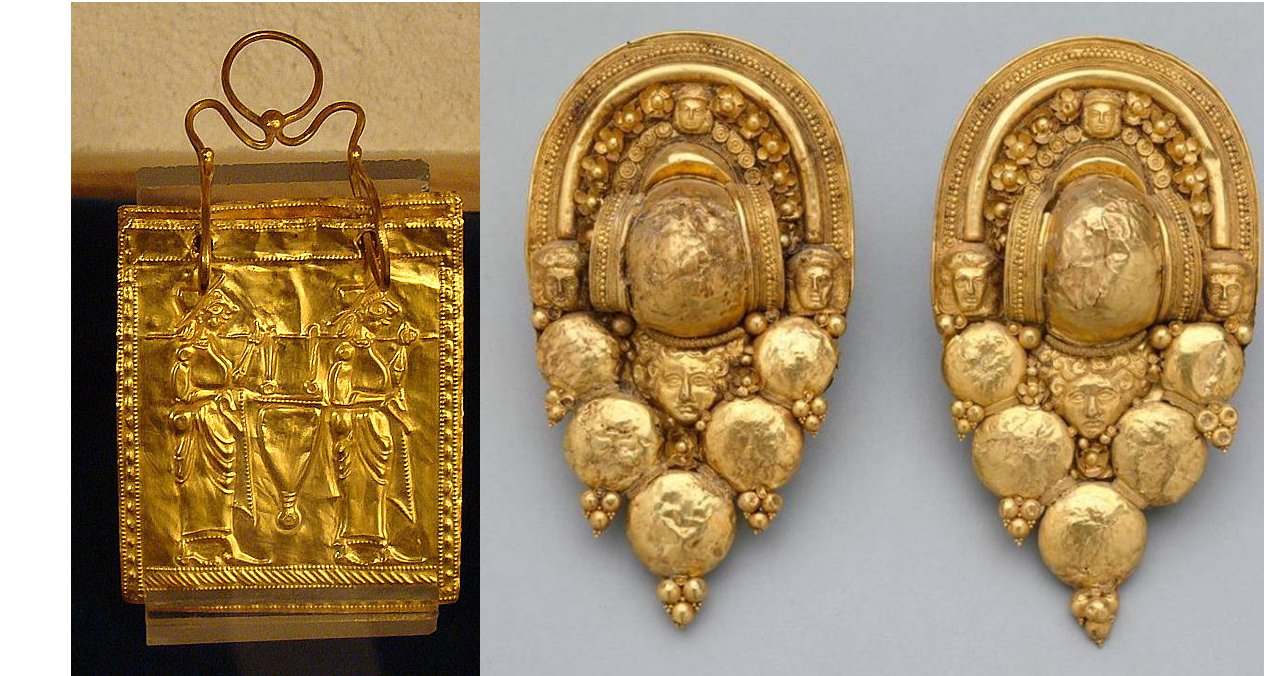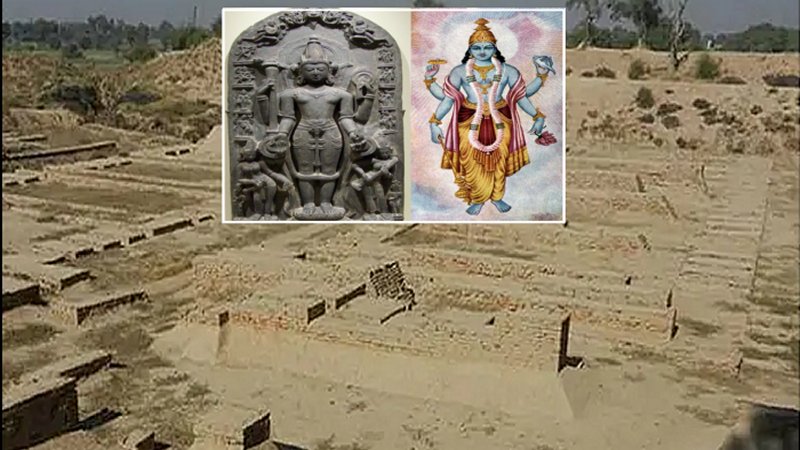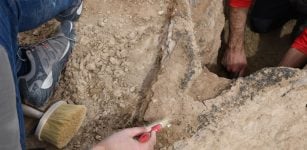Mysterious Etruscans: Skilled Sailors And Master Craftsmen
A. Sutherland – MessageToEagle.com – About 3000 years ago, a mysterious people called the Etruscans, settled in a region of Central Italy was known as Etruria.
Despite that these ancient people were much closer to us in time, they were even more enigmatic and inaccessible than other ancient cultures such as Crete, Mesopotamia, or Mycenae, and we have still much to learn about.
The mysterious, seafaring Etruscan civilization ruled the region of the Mediterranean before the rise of Rome.

Scholars have recorded some thirteen thousand Etruscan inscriptions; the phonetic sounds of the Greek alphabet are known so it is possible to reconstruct what the Etruscan language sounded like. The Etruscan language has been deciphered, but most Etruscan texts remain obscure. The language of the Etruscans bears very little relation to other known languages and extensive texts are rare.
The origin of this ancient civilization are lost in prehistory.
According to Livy, (Titus Livius, 59 BC – AD 17), the Etruscans had rich literature but almost all of it disappeared.
A few generations before Livy’s time, young Romans studied the Etruscan literature as meticulously as they later did the Greek, but except for brief inscriptions on tombs, mirrors, or pottery, none of this work has survived.
So, all we know about the Etruscans comes mainly from Greek and Roman sources.

The Greeks called their land “Hesperia” and the Etruscans were called “Tyrrhenians” probably after Tyrrhenus, fifth in descent from god Zeus and one of the founders of the Etruscan Federation of twelve cities.
Ancient Etruria lay on the western side of Italy, between the Apennines and the Tyrrhenian Sea.
It extended from the land about the Arno River in the north to the Tiber River in the south and included modern Tuscany, which takes its name from the Etruscans. At one period, the Etruscans controlled Campania and the basin of the Po River and had reached the northern Adriatic.

Speculations regarding their origin have never ceased. Some scholars speculated they came from the Danube, others proposed the region of North of the Alps.
Herodotus, claimed their arrival from Lydia, modern Anatolia in Asia Minor, but in fact the Etruscans did not speak Lydian, worship Lydian gods or follow Lydian laws.
Many of the most famous cities in Italy were originally Etruscan. Among them, there are Pisa, Arezzo, Cortona, Siena, Volterra, Orvieto, Perugia, Assisi, and others (Rome itself was once an Etruscan center, and the islands of Elba and Corsica were also Etruscan.)

But there were other towns, either deserted or forgotten in the decline of Etruscan cultures, such as Veii, Tarquinia, Cerveteri, and Chiusi where archeologists have found rich remains.
As scientists have not been able to study their language, they have always had to rely on the archeological excavations of their cities and numerous cemeteries. These archaeological sites, unfortunately, suffered more than two hundred-year-long plunderings, before professional archaeologists could apply indispensable skills to excavations.
Scholars have long analyzed ancient records and tried to decipher the Etruscan inscriptions. Especially, by the end of the century, there were unearthed many Etruscan remains such as stone statues, painted and figured pottery, gold vessels along with with a variety of domestic equipment in the form of candelabra, lamps, beautifully engraved mirrors, terracotta and bronze objects.
Many priceless bracelets, pendants, fibulae, rings, and other jewelry were also found. Many items showed Greek and Roman influence, however, they definitely were not of Roman or Greek origin. They had once belonged to the enigmatic and rather unknown civilization of people known as the Etruscans.

Discovered tomb paintings shed light on life of the Etruscans, showing, for example, that women were given an honored place in the society. They are depicted as banqueting with male guests and being embraced by their husbands. Also funerary inscriptions have revealed many names of the female and the male ancestors of the deceased.
Etruria was rich and the main source of this wealth were important minerals concentrated in the vicinity of the Metalliferous Hills (‘Colline Metallifere’) with plenty of copper, iron, zinc and tin. In exchange for these crucial minerals, the Etruscans could import ivory, silver and gold, which they appreciated so much.
The civilization flourished until the end of the second century B.C. when they were fully subsumed into Roman culture. There is still much to learn about the mysterious people – the Etruscans, but especially, one fascinating debate regarding the Etruscans – still continues.
There are scholars who believe that the Etruscans were the descendants of an oriental group of people who settled in western Italy after 1000 BC. Meanwhile, others suggest that they were rather an indigenous race, whose culture and traditions developed in Italy from the beginning, and were only subjected to influences from the east.
Written by – A. Sutherland – MessageToEagle.com Senior Staff Writer
Copyright © MessageToEagle.com All rights reserved. This material may not be published, broadcast, rewritten or redistributed in whole or part without the express written permission of MessageToEagle.com
References:
Graeme Barker – The Etruscans
Federica Borrelli – The Etruscans: Art, Architecture, and History
Related Posts
-
 Long-Lost Burial Site Of Viking King Harald Bluetooth Discovered By Satellites?
No Comments | Jun 29, 2022
Long-Lost Burial Site Of Viking King Harald Bluetooth Discovered By Satellites?
No Comments | Jun 29, 2022 -
 Puzzling Sabaean Inscription Found On A Large Clay Jar Near The Jerusalem Temple Deciphered
No Comments | Apr 10, 2023
Puzzling Sabaean Inscription Found On A Large Clay Jar Near The Jerusalem Temple Deciphered
No Comments | Apr 10, 2023 -
 Vatican Opens Its Secret Archives On Controversial Pope Pius XII
No Comments | Feb 28, 2020
Vatican Opens Its Secret Archives On Controversial Pope Pius XII
No Comments | Feb 28, 2020 -
 Rare Viking Boat Burial At Kiloran Bay In Colonsay, Scotland Remains A Fascinating Find
No Comments | Mar 15, 2023
Rare Viking Boat Burial At Kiloran Bay In Colonsay, Scotland Remains A Fascinating Find
No Comments | Mar 15, 2023 -
 Sir William Wallace: Brave Scottish Knight And Legendary Hero
No Comments | Feb 27, 2016
Sir William Wallace: Brave Scottish Knight And Legendary Hero
No Comments | Feb 27, 2016 -
 Two-Million-Year-Old DNA Opens A ‘Game-Changing’ New Chapter In The History Of Evolution
No Comments | Dec 7, 2022
Two-Million-Year-Old DNA Opens A ‘Game-Changing’ New Chapter In The History Of Evolution
No Comments | Dec 7, 2022 -
 Why Are Manuports Like The Makapansgat Cobble Interesting Archaeological Artifacts?
No Comments | Mar 29, 2024
Why Are Manuports Like The Makapansgat Cobble Interesting Archaeological Artifacts?
No Comments | Mar 29, 2024 -
 Temple Of Lord Vishnu Dated To Hindu Shahi Dynasty Unearthed In Pakistan
No Comments | Nov 22, 2020
Temple Of Lord Vishnu Dated To Hindu Shahi Dynasty Unearthed In Pakistan
No Comments | Nov 22, 2020 -
 Cosimo di Giovanni de’ Medici – Exile Of The Generous, Intelligent Banker Caused Fury In Renaissance Florence
No Comments | Apr 7, 2021
Cosimo di Giovanni de’ Medici – Exile Of The Generous, Intelligent Banker Caused Fury In Renaissance Florence
No Comments | Apr 7, 2021 -
 Unique, Well-Preserved 4,000-Year-Old Boat Discovered Near The Ancient City Of Uruk
No Comments | Apr 4, 2022
Unique, Well-Preserved 4,000-Year-Old Boat Discovered Near The Ancient City Of Uruk
No Comments | Apr 4, 2022
